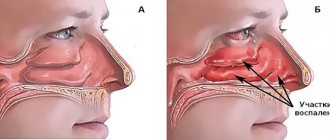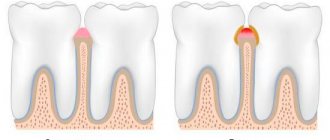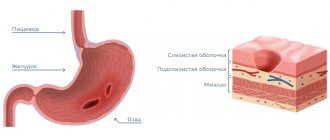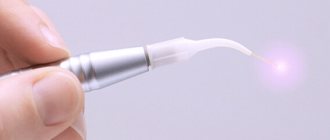- What is maxillary sinusitis?
- Symptoms
- Complications
- Types and types of maxillary sinusitis
- How is maxillary sinusitis diagnosed?
- Treatment
- Etiotropic therapy
- Puncture
- "YaMiK"-catheterization
- Treatment of symptoms of maxillary sinusitis
- Surgical intervention
- Treatment at home
- Prevention
Maxillary sinusitis (from the Latin “sinus” and “inflammation”) is an inflammation of the mucous membrane of the corresponding sinuses. The causes of this disease are various: allergies, rhinitis, diseased teeth, inflammation of the tissues around the teeth, injuries. Treatment includes conservative procedures, home remedies, and surgery.
What is maxillary sinusitis?
A person has several types of sinuses: frontal, sphenoid, maxillary and cells of the ethmoid labyrinth.
In each of these types, inflammation of the mucous membrane can occur. Then sinusitis will begin. Maxillary sinusitis is otherwise called sinusitis and is an inflammation of the paranasal sinuses. The maxillary sinuses were first illustrated by Leonardo da Vinci, and the disease itself was discovered by Nathaniel Highmore, a British surgeon and anatomist (he also described the maxillary sinuses in detail in his treatise of 1651). At that time, sinusitis was treated with home methods and heating.
Clinical picture
Mostly during an exacerbation, patients complain of difficulty breathing through the nose and discharge from the nasal cavity, which can be mucous, mucopurulent or purulent.
The purulent form of the disease is accompanied by complaints of discomfort in the area of the canine fossa and the root of the nose from the inflamed maxillary sinus. In some cases, pain may radiate to the superciliary or temporal region. Headache during an exacerbation is most often diffuse in nature, resembling trigeminal neuralgia. Hyposmia or anosmia (decreased or loss of sense of smell) is often observed. Quite rarely there are cases of closure of the nasolacrimal duct, and then lacrimation from the eye is observed.
Hyperplastic bilateral maxillary sinusitis occurs. During the period of exacerbation, along with all the signs of this disease, general weakness, malaise, and high (febrile) temperature (38-390C) are noted.
Friends! Timely and correct treatment will ensure you a speedy recovery!
Types and types of maxillary sinusitis
Depending on the etiology (cause of occurrence) of the disease, rhinogenic, odontogenic, traumatic and allergic maxillary sinusitis are distinguished.
Rhinogenic sinusitis occurs against the background of rhinitis (when the nasal mucosa becomes inflamed). The mucous membrane is the main obstacle to infections. When bacteria gets on it, a runny nose or rhinitis develops. The causes of rhinitis are different: viruses, hyperthermia, allergies.
, decreased protective properties of the body, penetration of synthetic agents, influence of dry air, too long use of drugs with a vasodilator or vasoconstrictor effect.
Rhinitis is characterized by congestion, nasal discharge, impaired circulation in the nasal cavity, and the development of congestive blood phenomena. There are 4 types of rhinitis: allergic
, chronic, acute, vasomotor.
Odontogenic sinusitis occurs due to inflammation of the mucous membrane of the maxillary sinus due to infection from an unhealthy tooth, the tissues around it, and the communication formed between the sinus and the oral cavity after tooth extraction. Symptoms of this disease can be apathy, loss of appetite, headache, aching temples, discharge from the nose or ear, cough, runny nose and others. Depending on the course of the disease, different treatment methods are chosen: antibacterial therapy and washing of the maxillary sinuses, pumping out pus or surgery.
Injury to the maxillary sinus or jaw can also lead to sinusitis.
The cause of allergic sinusitis is the body's hypersensitivity to one of the irritants. The disease begins in the nasal cavity and then spreads to the maxillary sinuses. What usually serves as an allergen? This is pollen during the flowering period, fur and excrement of pets, dust mites, medicines, household chemicals, perfumes, cosmetics, chemicals, dirty city air.
According to the duration of the disease, sinusitis is divided into:
- acute (less than 3 months);
- recurrent acute (can repeat up to four times a year);
- chronic (more than 3 months);
- exacerbation of chronic sinusitis (adding new symptoms to existing ones).
According to the severity of symptoms, sinusitis is:
- lungs
- moderate severity
- heavy.
Causes
The key reason for the formation of a maxillary sinus cyst is dental disease. Especially when treatment was not carried out or performed poorly. Pathology develops against the background of advanced caries, periodontitis and pulpitis on chewing units. This is due to anatomical features. Premolars and molars are located closest to the paranasal sinuses and are separated from them by a thin septum.
Until recently, teeth with cysts were subjected to extraction. Today, dentists prefer to perform organ-preserving surgeries. All stages of work are performed under control using a dental microscope.
An endodontist removes the cyst, performs sterilization and filling of the canals.
The formation of a tumor can be caused by a deviated nasal septum, jaw abnormalities, or chronic blockage of the ducts of the nasal glands due to rhinitis or sinusitis.
Diagnosis of the disease
A neoplasm measuring up to 15 mm is diagnosed only with a CT scan. A dentist can suspect the presence of a pathology during a routine examination of the patient’s oral cavity based on existing complaints.
Clinical symptoms
As the cyst grows, the patient develops alarming symptoms similar to those of acute sinusitis. These include:
- acute headache;
- chronic nasal congestion;
- clear or yellow nasal discharge;
- a feeling of heaviness and fullness in the area under the eyes;
- the presence of a viscous mucous lump in the throat after waking up.
Clinical symptoms become more pronounced as the lumen in the nasal cavity closes. If there are concomitant dental problems, pain in the tooth and swelling of the gums occur.
Potential Complications
If left untreated, the infection spreads to adjacent teeth in the upper jaw. There is a risk of bone deformation or jaw fracture, the development of an abscess, phlegmon and other purulent complications.
The cyst is accompanied by sinusitis and chronic sinusitis. The growth of the tumor is dangerous due to visual impairment. The formation of a purulent cyst can lead to the development of meningitis or encephalitis.
Complex treatment
When treating pathology, dentists use medicinal and surgical techniques. The tumor is removed during surgery. Further drug therapy is designed to eliminate the symptoms of the inflammatory process and prevent complications.
Treatment in dentistry
Most patients go to the dentist when the size of the cyst exceeds 1 cm. The dental surgeon removes the bag of pus by cystectomy or cystotomy. The choice of technique is based on the size of the cyst and clinical indications.
The dentist is faced with a number of tasks:
- remove the source of inflammation in the oral cavity and stop the inflammatory process;
- provide drainage for the outflow of pus;
- if possible, save the diseased tooth;
- fill the resulting cavity with bone material;
- close the fistula between the oral cavity and the sinus.
Inpatient treatment in the ENT department
If the appearance of a cyst is caused by ENT pathologies, you should consult an otolaryngologist. Tumors are removed by surgery, laser or gentle endoscopic techniques. During endoscopy, the doctor gains access to the affected area through the nasal passages or an opening in the facial wall of the maxillary sinus. Control of manipulations on the monitor screen is carried out.
How is maxillary sinusitis diagnosed?
When diagnosing a disease, it is necessary to collect a number of indications: find out about complaints, write down symptoms, analyze the patient’s medical history and conduct an examination (computed tomography, x-ray).
Possible symptoms: headache, temporal pain, nasal and ear discharge, accumulation of mucus in the back of the throat, intoxication (in severe cases).
The medical history should contain information about past illnesses, injuries, hypothermia, etc.
The examination usually consists of palpation and percussion in the area of the paranasal sinuses, and also includes pharyngoscopy and rhinoscopy.
Acute sinusitis. Symptoms Treatment. Prevention.
- home
- For patients
- Articles
- Acute sinusitis. Symptoms Treatment. Prevention.
»
»
»
Some bones of the human skull are hollow formations, that is, they have sinuses inside (maxillary (maxillary), ethmoid, frontal (frontal), main (sphenoidal)). Inflammation of the mucous membrane of one or more of these sinuses is called the general term sinusitis (from the Latin sinus - sinus).
The largest sinus is the maxillary sinus.
The entry of a bacteria, virus or allergen into the sinus provokes the development of edema, the lumen of the sinus decreases, and an excess amount of mucus is formed, which disrupts the movement of air flow. Bacteria begin to multiply in the cavity, producing pus.
Sinusitis is an inflammation of the maxillary (maxillary) sinus.
Symptoms:
• Increased body temperature, chills.
• General malaise. • Runny nose (nasal discharge is usually mucous at first, and on the 5-7th day it becomes purulent). • Nasal congestion. • Sneezing. • Pain in the maxillary sinuses (infraorbital-buccal region), radiating to the teeth, forehead, and root of the nose. • Pain intensifies when bending the head forward, sneezing or coughing. • Nasality. • Decreased sense of smell.
Forms
According to the type of inflammation, they distinguish: • acute catarrhal sinusitis (viral) usually does not differ from a runny nose and is manifested by congestion, nasal discharge, and sometimes there is a slight heaviness in the buccal-infraorbital area. Acute catarrhal sinusitis can end in recovery or go into the second stage, that is, the stage of acute purulent sinusitis; • acute purulent sinusitis (bacterial) is characterized by the accumulation of pus in the maxillary (maxillary) sinuses. Facial pain becomes more intense, a headache occurs, and the patient’s general condition worsens significantly.
In any of the forms, sinusitis can be: • unilateral (inflammation of the sinus on one side); • bilateral (inflammation of the sinuses on both sides).
Causes
Acute sinusitis develops: • as a complication after acute respiratory infections; • in the presence of foci of infection in the nasopharynx (rhinitis (runny nose), tonsillitis (inflammation of the tonsils)); • against the background of disease of the teeth of the upper jaw (odontogenic sinusitis); • as a result of allergies; • as a result of injuries and wounds of the upper jaw (traumatic). A predisposing factor is also seasonal hypovitaminosis, that is, a state of decreased body tone due to a lack of vitamins (usually in the autumn-winter period).
Diagnostics
• Analysis of complaints and medical history: nasal congestion, thick nasal discharge (possibly green), headache or facial pain, aggravated by bending the head forward, nasal tone, increased body temperature, the presence of a runny nose or colds that preceded the disease, the fact of treatment by a dentist etc. • General examination: the presence of swelling in the cheek area; when pressing in the area of the maxillary sinuses, discomfort is noted - from increased sensitivity and mild pain to sharp pain radiating to the orbital area, etc. • Rhinoscopy - instrumental examination of the nasal cavity, during which signs of the development of the inflammatory process (swelling and redness of the mucous membrane, purulent discharge). • Endoscopic examination of the nose reveals pus in the middle meatus, which indicates the presence of purulent sinusitis. • X-ray diagnosis: in some cases, an X-ray of the maxillary sinuses shows the fluid level. • Diagnostic puncture of the maxillary sinus: the wall of the maxillary sinus in the nose is pierced with a special thin needle under local anesthesia. Then, using a syringe, the contents of the sinus are drawn out. When pus is obtained, the sinus is washed and a medicinal substance is injected into it. • Ultrasound of the paranasal sinuses is sometimes used as an alternative to x-ray examination. • Oropharyngoscopy (examination of the oral cavity) to identify carious teeth, assess the condition of fillings, etc. If necessary, a consultation with a dentist is indicated.
Treatment
Drug treatment: • vasoconstrictor drugs in the form of sprays or drops into the nasal cavity (drugs in this group relieve swelling of the mucous membrane and help remove stagnant fluid from the maxillary sinuses). The products are used in a short course, lasting 5-7 days; • nasal sprays containing antibiotics and steroid hormones (have an anti-inflammatory effect); • antihistamines, if the disease develops against the background of allergic reactions; • mucolytics – drugs that help liquefy the contents of the maxillary sinuses and, as a result, improve its excretion; • for purulent sinusitis, it is possible to prescribe antibiotics (in the form of tablets or injections).
Non-drug treatment. • Puncture (puncture) of the maxillary sinuses. The method allows you to quickly remove purulent contents (which leads to a rapid reduction in headache and facial pain, and improve your general condition) and inject medicinal substances directly into the sinus. Carrying out punctures of the maxillary sinuses in many cases allows you to do without prescribing antibiotics. • Rinsing the nose with saline, herbal and antiseptic solutions: The procedure can be carried out independently at home using special devices for a nasal shower, sprays or syringes; • Physiotherapy (treatment using natural and artificially created physical factors) is prescribed only when there is a good outflow of contents from the sinuses. • Taking general strengthening medications.
Surgical treatment is performed in the presence of orbital (eye) and intracranial complications. Treatment comes down to opening the purulent cavities and their sanitation, that is, removing the pus.
Complications and consequences
• Inflammation of the soft tissues of the face. • Spread of inflammation into the respiratory tract: inflammation of the bronchi (bronchitis), lungs (pneumonia), and ears (otitis). • Spread of the inflammatory process into the cranial cavity with the development of meningitis (inflammation of the meninges), encephalitis (inflammation of the brain substance) or brain abscess (formation of purulent cavities). • Purulent inflammation of the skull bones (a complication requiring surgical intervention). • Inflammation of the eyeball and its membranes, which can cause vision loss. • Inflammation of the trigeminal nerve (the large nerve in the face), accompanied by severe pain. • Sepsis is a severe complication that develops when the pathogen enters the bloodstream, with the further formation of secondary foci of inflammation in vital organs. • Risk of death.
The sooner you seek help from a specialist, the greater the chances of maintaining health and reducing the risk of complications!!!
Prevention
• Timely and adequate treatment of runny nose (rhinitis). • Treatment of nasal diseases accompanied by difficulty in nasal breathing (chronic rhinitis, deviated nasal septum). • Timely sanitation (treatment) of carious teeth. • Timely treatment of allergies. • Prevention of colds and strengthening the immune system:
hardening in the autumn-winter period; avoid hypothermia; taking multivitamin complexes in the autumn-winter period; wearing protective bandages during periods of mass morbidity, for example, influenza; balanced and rational diet (eating foods high in fiber (vegetables, fruits, herbs, etc.).
The information was prepared by an otorhinolaryngologist of the highest category, Doctor of Medical Sciences I. V. Raitselis
Sources: “Otorhinolaryngology”, manual for doctors V. T. Palchun, A. I. Kryukov, Moscow “Medicine”, 2001 “Otorhinolaryngology: national guide” edited by V. T. Palchun, GEOTAR-Media, 2008 G.
Treatment
Etiotropic therapy
Prescribing antibacterial agents (the main causative agents of acute sinusitis) helps to achieve rapid results in therapy:
- β-lactams: amoxicillin, clavulanate, cefaclor, cefuroxime axetil, sulbactam;
- fluoroquinolones: levofloxacin, gatifloxacin, moxifloxacin;
- macrolides: azithromycin, clarithromycin.
Puncture
This method is used if the disease cannot be cured with medication. It is the most famous method for removing pus from the maxillary sinuses. Quite painful, unlike other procedures.
"YaMiK"-catheterization
A fairly effective remedy in the fight against maxillary sinusitis, it does not cause complications. The procedure is quite painful, like puncture; patients cannot always tolerate it well.
Important: the operation is not advisable for isolated lesions of one paranasal sinus, since infection can be introduced into healthy paranasal sinuses.
What happens in the sinus?
Chronic sinusitis is predisposed to:
- inadequate treatment of acute inflammation, with self-medication and non-compliance with medical recommendations;
- the presence of anatomical features that complicate drainage of the maxillary sinus - curvature of the nasal septum, deformation of the turbinates and the presence of neoplasms that impair ventilation and drainage of the maxillary sinus;
- the presence of concomitant pathology of the ENT organs, such as allergic rhinitis, hay fever.
The transition of inflammation to the chronic phase is characterized by structural changes in the mucous membrane. Swelling with serous-mucous discharge, characteristic of acute sinusitis, persists. As a result, a complex of productive-exudative disorders occurs in the affected sinus, which support infectious inflammation and are usually not able to resolve on their own.
Over time, deep-lying tissues and neighboring anatomical structures are involved in the process, and complications develop. A chronic infection in the sinus weakens the responsiveness of the immune system, making a person susceptible to upper respiratory tract infections.
Treatment of symptoms of maxillary sinusitis
Symptomatic treatment of sinusitis includes topical decongestants (such as xylometazoline and oxymetazoline) that improve sinus ventilation, mucolytics (such as carbocysteine) that improve mucus secretion, topical antiseptics (miramistin and others) and irrigation therapy (such as nasal douches). , before using which you need to use vasoconstrictor drugs), which flush out mucus and kill microbes in the sinus cavity, topical glucocorticosteroids, combined drugs (non-steroidal and anti-inflammatory drugs - paracetamol, ibuprofen).
Among the most effective drugs for treating the symptoms of sinusitis are
Sialor based on silver ions . It has an anti-inflammatory effect and prevents the proliferation of bacteria. Thanks to the mild action of the drug, the balance of microflora is maintained and favorable conditions are created for the regeneration of the nasal mucosa.
Surgical intervention
Drug treatments are not always effective; sometimes it is necessary to resort to surgery. At the same time, both approaches to diseased sinuses (extranasal, endonasal, combined), surgical technologies (magnifying devices and lighting devices), and surgical methods differ.
Important: after sinusitis, patients should be periodically (at least once every 3 months) observed by an otolaryngologist.
Treatment at home
An option for treating maxillary sinusitis at home is steam inhalation, which improves blood circulation, thins mucus accumulations, and also improves the flow of medications from the blood. But in acute cases of maxillary sinusitis, this method is dangerous; it can provoke generalization of the infectious process.
You can do inhalations with a decoction of herbs (calendula, celandine, bay leaf, string of sage, chamomile). Add alcohol tincture of propolis (1 teaspoon per 0.5 liter of decoction) and a couple of drops of iodine to boiling water.
In addition to such inhalations, you can also breathe over boiled potatoes. Important: you need to breathe for 10 minutes every day, the course is a week.
Warm the nose with table salt in a bag, boiled with an egg, and a blue lamp. Rinse the nose with the following solution: 1 teaspoon per glass, furatsilin (2 tablets), herbal decoctions (sage, celandine, chamomile). The procedure can be repeated up to 10 times a day.
Symptoms
Inflammation of the paranasal sinuses is accompanied by the following clinical manifestations:
- difficulty breathing through the nose, nasal congestion;
- headache and/or pain in the inflamed sinus area (forehead, bridge of the nose, upper jaw);
- moderate mucous or mucopurulent nasal discharge;
- drainage of mucus down the back of the throat (postnasal drip), which may be accompanied by a cough;
- fever, weakness, and sweating are possible in acute sinusitis caused by microbial flora.
Surgical treatment: in what cases is it necessary?
Surgical treatment of the disease in adults has several goals:
- Evacuation of pathological contents of the maxillary sinus and nasal cavity.
- Removal of formations that support inflammation in the maxillary sinus (polyps, excessive pseudopolypous growths of the mucous membrane, cysts).
- Rinsing the maxillary sinus using anti-inflammatory and antimicrobial drugs.
- Ensure adequate drainage. This may require corrective manipulations in the area of the sinus opening, correction of the nasal turbinates and resection of the nasal septum.
Creating adequate outflow and sufficient ventilation of the sinus is the most important task in the treatment of chronic sinusitis. But it is not always possible to restore drainage and cure chronic sinusitis conservatively; in many cases, surgery is necessary.
Identification of severe inflammatory phenomena and obvious structural changes in the sinus is a key indication for surgical treatment. Surgery is necessary in cases where conservative treatment of chronic sinusitis is ineffective: in the hyperplastic form of the disease, the presence of polyps, cysts and other formations that impair the drainage and ventilation of the maxillary sinus.










